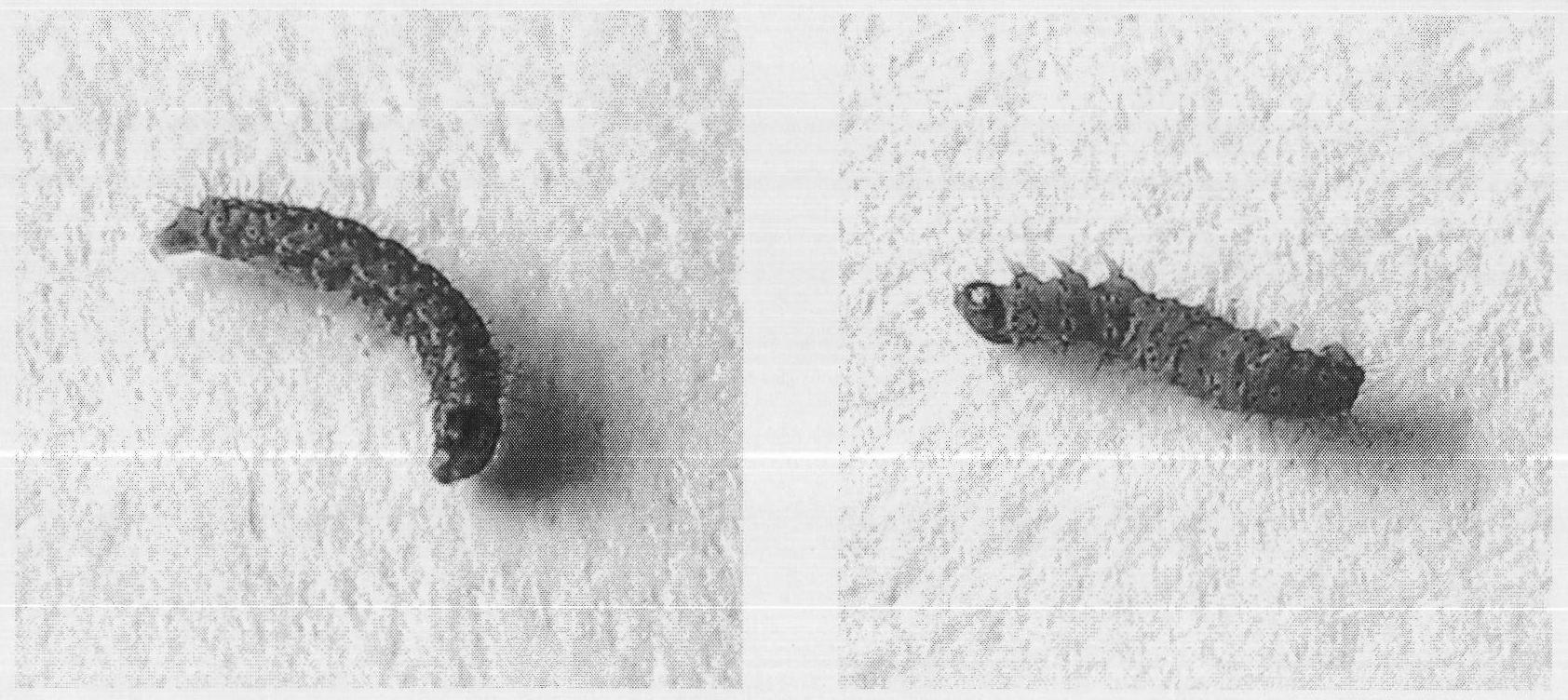Biopesticide and insect preventing and controlling method
A biopesticide and lepidopteran insect technology, applied in botany equipment and methods, insecticides, biocides, etc., can solve the problem of slow effect of engineering strains expressing dsRNA, food safety problems of transgenic plants, high cost of dsRNA synthesis, etc. Problems, achieve the effect of enhancing stability and efficacy, short cycle, enhancing stability and effect
- Summary
- Abstract
- Description
- Claims
- Application Information
AI Technical Summary
Problems solved by technology
Method used
Image
Examples
Embodiment 1
[0029] This example specifically provides the siRNA of the gene of the mitochondrial complex III Fe-S subunit of diamondback moth, which has a fatal effect on lepidopteran insects such as diamondback moth after natural feeding of the target gene siRNA.
[0030] This example is a method for controlling the lepidopteran insect diamondback moth (Plutella xylostella). By feeding siRNA containing silencing mitochondrial complex IIIFe-S subunit gene (GeneBank accession number: EU815629), the insect mitochondrial electron transfer is blocked, and the formation of insect ATP is inhibited, thereby achieving effective control of insects.
[0031] Mitochondrial complex III, also known as ubiquinol-cytochrome c reductase, consists of 9-11 subunits, including two cytochrome b (b562 and b566), one cytochrome C1 and one Fe- S protein. Among them, the Fe-S protein subunit is responsible for transferring an electron from reduced coenzyme Q to cytochrome C1, and releasing a proton to the membr...
Embodiment 2
[0064] This example particularly provides the siRNA of the mitochondrial complex IIIFe-S subunit gene of diamondback moth, by naturally feeding the target gene Si-UQCR_001 (SEQ ID NO 5 and 6) siRNA with the cationic polymer polyethyleneimine (PEI ), chitosan, polylysine and gelatin have caused fatal effects on lepidopteran insects such as diamondback moth.
[0065] Si-UQCR_001 (SEQ ID NO 1 and 2) siRNA and the above cationic polymer were prepared into biopesticides, and evenly coated on cabbage leaves and fed to the second instar larvae of Plutella xylostella, in groups 1-4, N in biopesticides :P is 1:1, and in groups 5-6, N:P in biopesticides is 20:1. The leaf concentration of siRNA was 3.0 μg / cm 2 . 30 worms were treated with each pair of siRNA, and three replicates were set up, and DEPC water was used as a negative control group. After that, the number of dead insects was investigated respectively at 12h, 24h, 36h, 48h, 60h, and 72h, and the mortality rate was calculated...
Embodiment 3
[0070] This example particularly provides the siRNA of the acetylcholinesterase gene of diamondback moth, which has a lethal effect on Lepidoptera insects such as diamondback moth after natural feeding of the siRNA of the target gene.
[0071] This example is a method for controlling the lepidopteran insect diamondback moth (Plutella xylostella). By feeding siRNA containing silencing acetylcholinesterase genes 1 and 2 (GeneBank accession numbers: AY970293 and AY061975), the normal nerve impulse transmission of insects is affected, and the insects continue to be in a state of excitement and die, thereby realizing the effective treatment of insects. governance.
[0072] Acetylcholinesterase is a serine hydrolase whose main function is to interrupt the transmission of nerve impulses by rapidly hydrolyzing the neurotransmitter acetylcholine (ACh) at cholinergic synapses (Taylor T, Radie Z, 1994.Thecholinesterases: from genes to proteins. Annu Rev Pharmacol. Toxicol., 34:281-320)....
PUM
 Login to View More
Login to View More Abstract
Description
Claims
Application Information
 Login to View More
Login to View More - R&D
- Intellectual Property
- Life Sciences
- Materials
- Tech Scout
- Unparalleled Data Quality
- Higher Quality Content
- 60% Fewer Hallucinations
Browse by: Latest US Patents, China's latest patents, Technical Efficacy Thesaurus, Application Domain, Technology Topic, Popular Technical Reports.
© 2025 PatSnap. All rights reserved.Legal|Privacy policy|Modern Slavery Act Transparency Statement|Sitemap|About US| Contact US: help@patsnap.com



